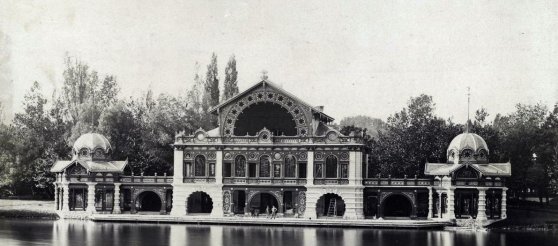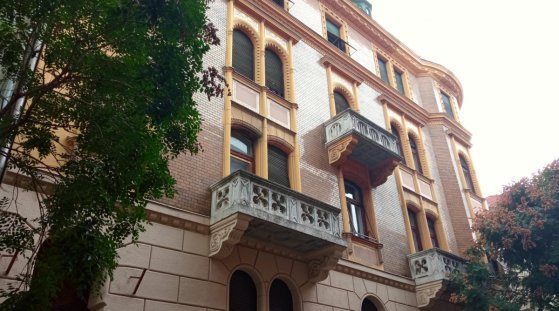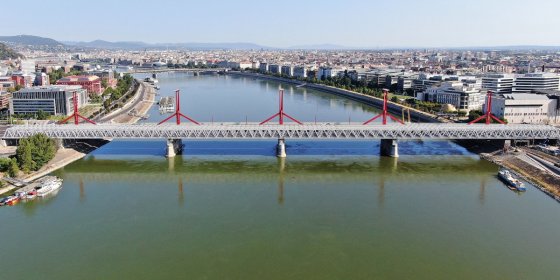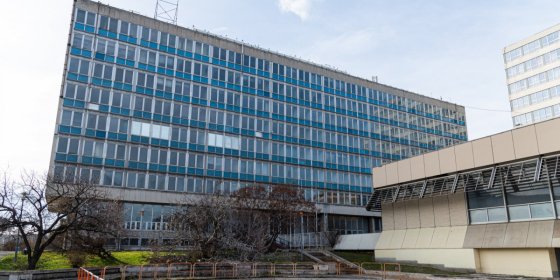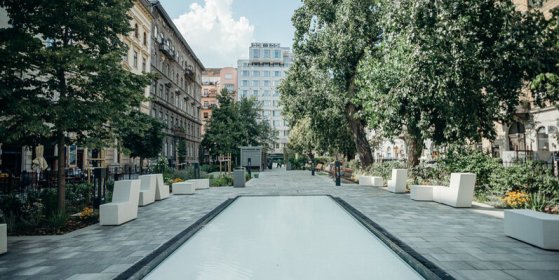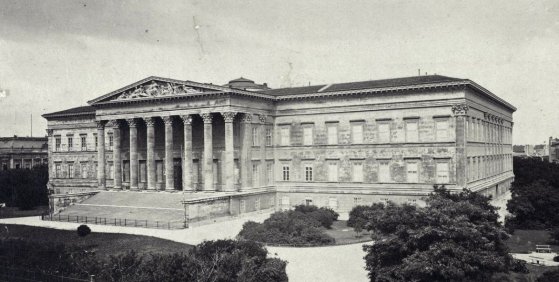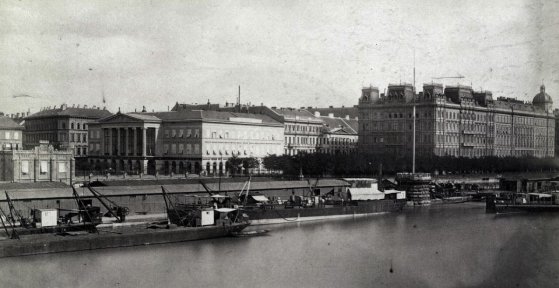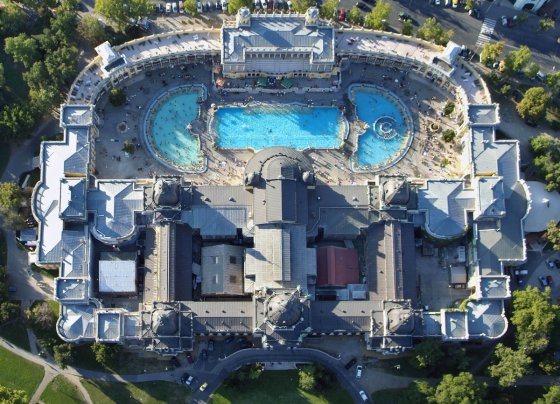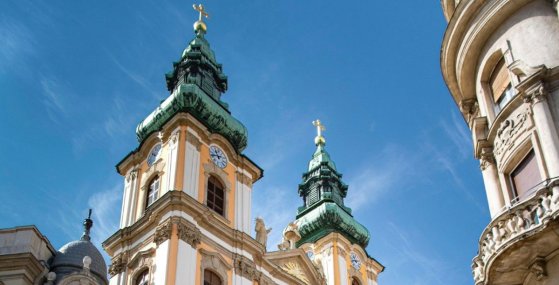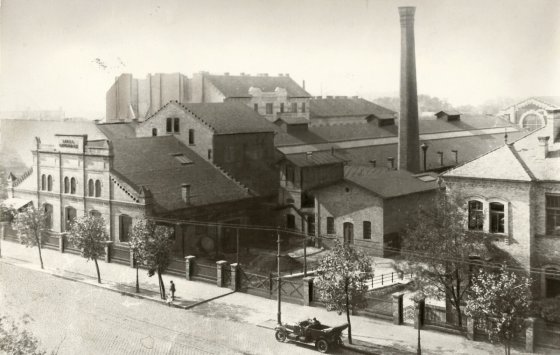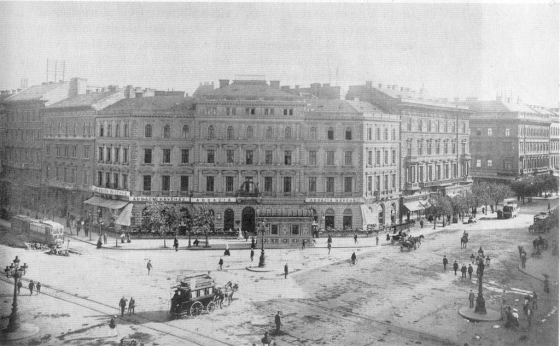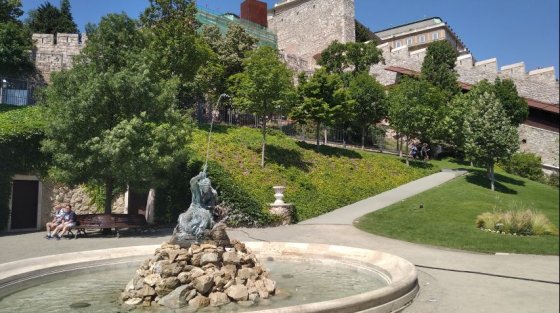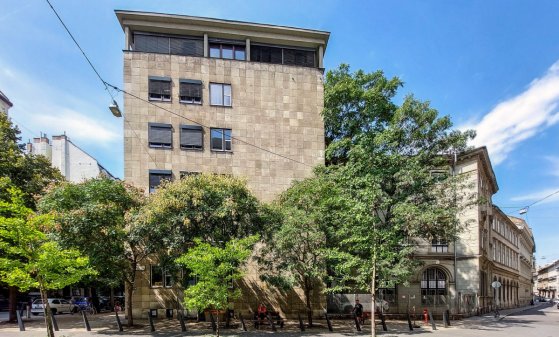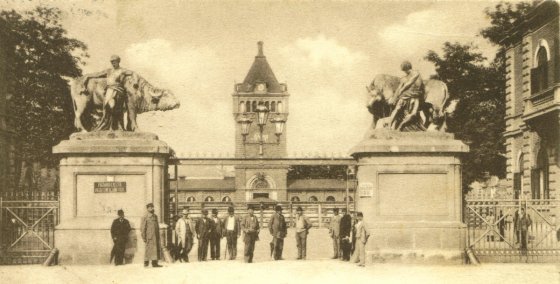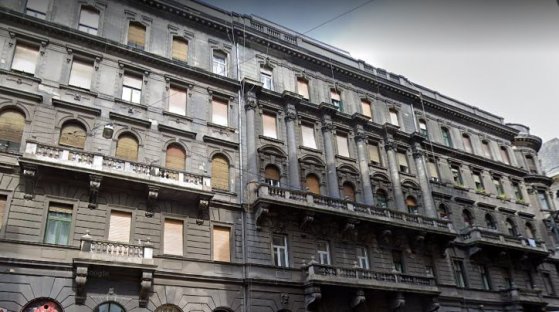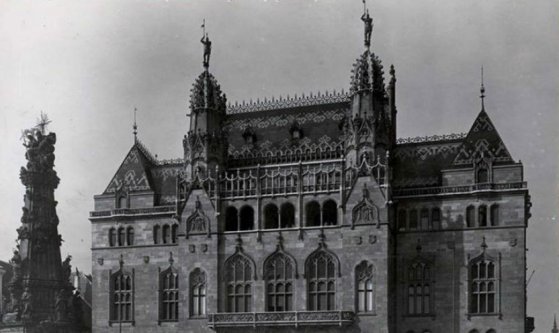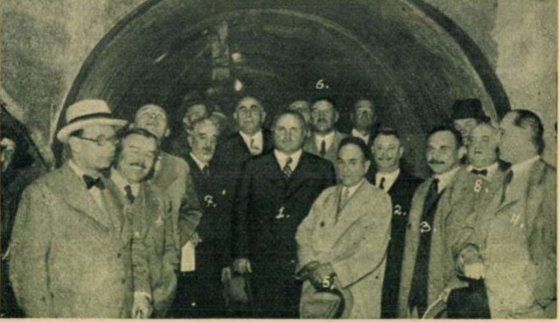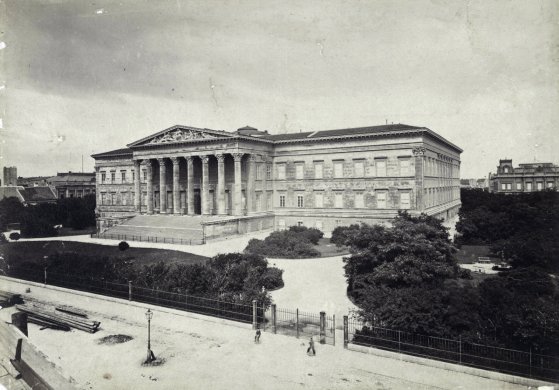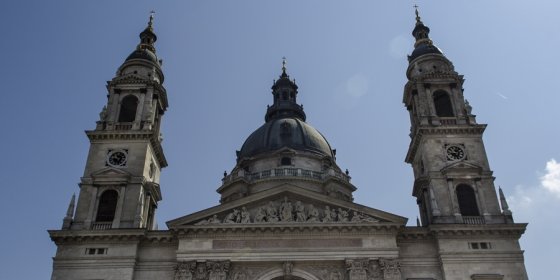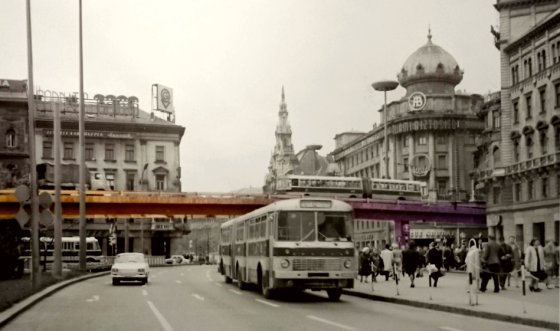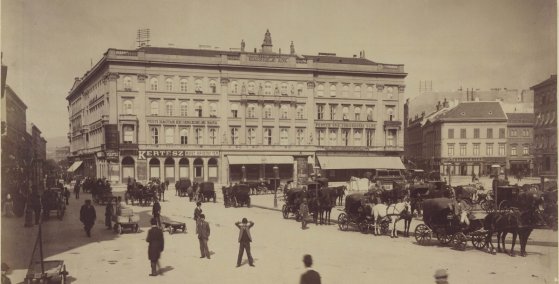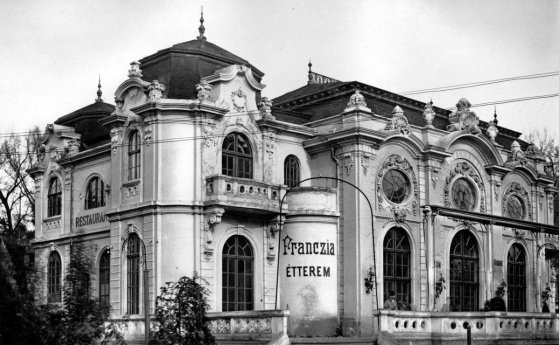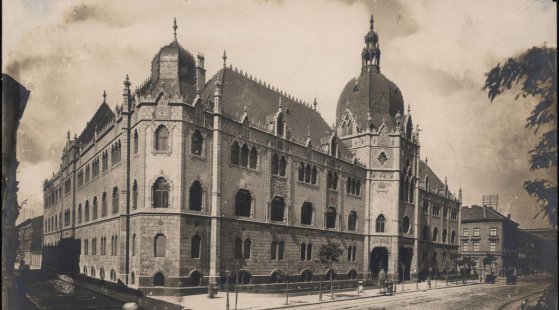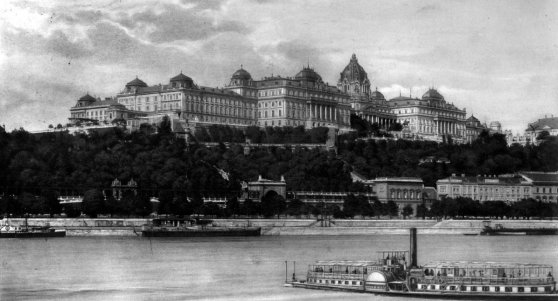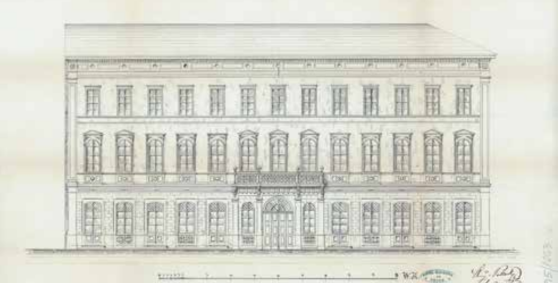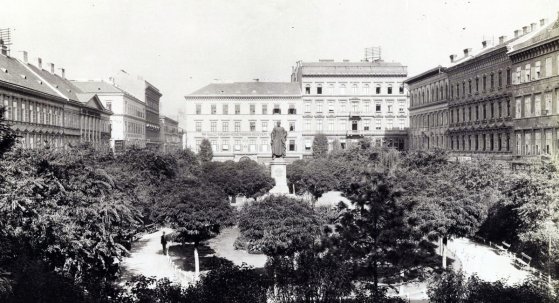 The „intertwined history” of the bridges and the city of Budapest
Which ideas and events have shaped the fate of bridges of Budapest and the cityscape? Alongside many other interesting facts, this question is also answered this newly published book by the Budapest City Archives, which introduces the history of bridges in Budapest.
The „intertwined history” of the bridges and the city of Budapest
Which ideas and events have shaped the fate of bridges of Budapest and the cityscape? Alongside many other interesting facts, this question is also answered this newly published book by the Budapest City Archives, which introduces the history of bridges in Budapest.
Architecture
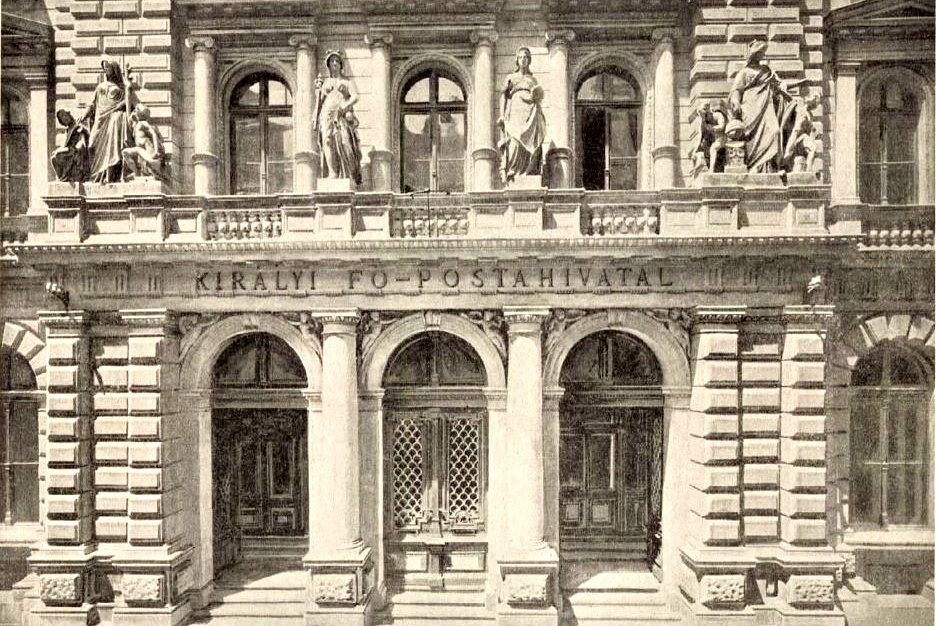 Two floors were built on it, but the historic building of the city centre Main Post Office still stands empty
Two floors were built on it, but the historic building of the city centre Main Post Office still stands empty
September 6, 2022 at 3:00 PM
Almost 150 years ago, in 1873, the imposing building of the Royal Hungarian Main Post Office was completed in the city centre. The floor plan and cost plan of the postal palace bounded by three streets were prepared by Henrik Koch, and the plans for the glass roof of the inner courtyard were prepared by Antal Szkalnitzky. The historic building bordered by Petőfi Sándor, Párizsi and Városház Streets was also privately owned, and they wanted to turn it into a hotel more than ten years ago, but the former Main Post Office is still unused today.
The first efforts of a genius - Ödön Lechner's early buildings
September 4, 2022 at 11:00 AM
Ödön Lechner became really famous for the Hungarian architectural design language, which he began to use from the last decade of the 19th century. However, his career as a designer started much earlier, at the very beginning of the 1870s, and he had a nice upward curve: one hundred and fifty years ago, several buildings were realized at the same time according to his ideas, although not yet in the style that would later become characteristic. We present some of them below.
110-year-old jewel-box in Bokréta Street - Home of a car manufacturing dynasty
September 3, 2022 at 2:30 PM
On the corner of Tűzoltó Street and Bokréta Street in Ferencváros, there is an eye-catching residential building. Passers-by often stop to take a closer look at its building ceramics, its carefully and artistically carved gate or the small corner tower that decorates its dome. The house was once the home of the internationally famous Zupka carriage manufacturer and then vehicle body builder family, and it was built right next to the factory in 1912. On the site of the assembly plant, a modern residential building stands in Tűzoltó Street, but the former family home designed by the architect János Bach has fortunately been preserved for posterity.
The plot of the demolished Burg Hotel was transferred to the property manager of the MNB
August 5, 2022 at 5:30 PM
The former Diplomatic House on Szentáromság square was demolished at the beginning of 2022, and a new conference center will be built in its place, the visual plans of which have already been presented. The plot was recently transferred to the property manager of the MNB.
Bridge inauguration: the renovated and expanded southern connecting railway bridge was handed over
August 4, 2022 at 5:30 PM
The first railway crossing was originally built in 1877 on the part next to today's Rákóczi bridge, the bridge has been rebuilt several times since then, expansion of its capacity was proposed as early as the 1910s, but it was only recently expanded to three tracks. The line is one of the country's most important east-west railway connections. 150 passenger and 100 freight trains cross the approximately 500-meter-long bridge every day, and 2.8 million passengers used it last year.
Plans for BME's new building on Goldmann square are awaited
August 3, 2022 at 2:00 PM
The public tender for the design of the new building of the University of Technology was announced. The call states as a separate clause that the Innovation and Development Center to be built on the site of the demolished Goldmann György square buildings of the BME must be worthy of the existing building complex on the Danube, which is part of the world heritage.
The renovated Jókai square has opened
August 1, 2022 at 6:30 PM
During the reconstruction, new street furniture was placed on Jókai Square in the 4th district, the green area was renewed, trees were planted, and a fountain was also placed.
Interior transformation of the National Museum - The building was also expanded with a hidden floor
July 29, 2022 at 9:00 AM
The Hungarian National Museum is one of the iconic buildings of our country, so since it was handed over in 1847, attention has been paid to its condition. By the beginning of the 20th century, however, its collection had already grown to such an extent that excessive crowding made its operation impossible. Some of the preserved material was transported to other buildings, and then in 1926, its large-scale restoration began, during which a hidden, third floor was also created in 1927 - ninety-five years ago.
Where the Nyugat editors' favourite coffee house operated - The Krausz Palace was built on Sugárút
July 27, 2022 at 10:30 AM
The former Krausz Palace is located on 12 Andrássy Avenue, the capital's most representative road. Its designer, Zsigmond Quittner - the creator of the Gresham Palace - was only 27 years old when he designed this spectacular apartment building for the order of the wealthy manufacturer Lajos Krausz. Famous artists such as Károly Lotz, Gyula Donáth, and József Róna participated in the decoration of the house, built in 1885, whose works can be seen on the Opera House, Vigadó, and the National Bank building, among others. The Magyar Korona Coffee House later operated on the ground floor, which was also a favourite place for the editors and authors of the Nyugat.
Plans for a metropolis - the beginnings of Budapest's urban planning
July 25, 2022 at 10:00 AM
Budapest's golden age coincided with the country's economic boom: after the Compromise of 1867, the city, located on both banks of the Danube, began to develop rapidly. In 1870, in order to regulate growth, the Parliament established the Budapest Public Works Council, whose first tasks included the procurement of a general city plan. Based on this, in 1872 - one hundred and fifty years ago - Pest's first comprehensive regulatory plan was drawn up.
Baths from above - As seen by the birds
July 24, 2022 at 1:00 PM
In the raging summer, many people cool off in Budapest's well-known spas, which are not only attractive because of their healing effects and mineral-rich waters, but most of them are also tourist attractions and represent an inestimable value within our architectural heritage. Many people know these masterpieces inside and out, but perhaps few have seen them from above. From this special point of view, the surroundings of the baths can be seen in aerial photos.
Art inside the centuries-old walls - the little-known side of the University Church
July 17, 2022 at 9:00 AM
The walls of the University Church have been standing tall in the inner city of Pest for 280 years: the construction of one of the jewels of Hungarian Baroque architecture was finished in 1742, after nearly twenty years. However, this did not mean its completion, as the interior was still completely unadorned at that time. It got its worthy face surprisingly late, only in the middle of the 19th century, which was supplemented with additional details at the beginning of the 20th century- so the church we know today was formed then.
One of the most important plants of Hungarian industry was the Láng Machine Factory - a residential park is being built in its place
July 12, 2022 at 9:00 AM
The Láng Machine Factory, founded in 1868, was one of the most important factories in Hungarian industry. Its success can also be measured in the fact that in a relatively short time, the workshop of 8-10 people became a large company employing hundreds of employees. László Láng opened his workshop on Váczi Boulevard, today's Bajcsy-Zsilinszky Road, and then in 1873 he moved to Váci Road, where he operated until its cessation. There are only four buildings under monumental protection in the area of the former factory, around which a modern housing estate will soon be built.
The birth of an iconic place - Oktogon is 150 years old, which was called Nyolcszög Square for decades
July 10, 2022 at 12:30 PM
We can safely call Oktogon Budapest's most unique transport hub: with its regular octagon shape, it quickly stands out on the map, and its easy-to-remember name means refreshment for foreigners, especially in Hungarian conditions. In addition, public transport routes famous throughout Europe intersect here: the continent's first underground railway, as well as the busiest tram lines. Its birth also coincides with the beginning of the golden age of the capital: its current form was defined 150 years ago, and for a long time it was called Nyolcszög Square.
Surroundings of Buda Castle - The historic gardens are being renewed
July 9, 2022 at 9:00 AM
The National Hauszmann Program covers not only the reconstruction of the buildings of the Buda Palace District, but also the renovation of the gardens surrounding them. The royal environment at the turn of the century naturally also demanded eye-catching green surfaces, on which an army of gardeners worked. This wonderful environment survived the siege relatively unscathed, but the rebuilding after World War II did not spare it, so in fact these gardens can also be considered huge losers of deliberate destruction.
The building of the ELTE Faculty of Law on Kecskemét Street will be renovated - The Csekonics Palace once stood on the site
July 7, 2022 at 7:30 PM
Building B of the ELTE Faculty of Law is at 10–12 Kecskeméti Street, located at and connected to Magyar utca 31–33. The monument complex is now being renovated and modernized. A famous building once stood on the plot, the luxurious palace of the wealthy Csekonics.
In memory of Marhavágóhíd - one of the capital's meat industry centres was completed 150 years ago
June 30, 2022 at 9:00 AM
When it was completed, it was considered one of the capital's architectural attractions. Many citizens of Buda and Pest, and even visitors from the countryside or abroad, were curious to see what the complex of buildings looked like, which became one of the defining institutions of public food supply from 1872 and remained so for almost 100 years.
Collapsed architectural values - The Jókai Street residential building
June 29, 2022 at 9:00 AM
The collapsed roof structure of the residential building on the corner of Jókai and Aradi Streets injured several people, and the parked cars also suffered considerable material damage, as bricks, pieces of plaster and other construction materials fell from a height of nearly twenty metres. The unfortunate accident drew attention to the building itself, which is a sophisticated work of the late 19th century.
French, Italian, German, Hungarian - The Royal Hungarian Ministry of Finance and its European counterparts
June 28, 2022 at 9:00 AM
Hungarian folk art played a major role in the magical interiors of the Szentháromság Square palace of the Hungarian Royal Ministry of Finance. Because at the time of its construction - at the very beginning of the 20th century - the national sentiment was on fire in our country, which was expressed in the language of architecture by reviving the people's ancient decorative motifs. A Ministry of Finance is an important institution in every country, but is the spirit of the given nation reflected on the walls elsewhere? By presenting some European examples, we are looking for the answer to whether this type of building was built based on this concept elsewhere.
The drilling of the first tunnel under the Danube began 90 years ago
June 27, 2022 at 10:00 AM
It was an old dream to build a tunnel between Pest and Buda under the Danube, the idea already stirred the imagination of designers in the 19th century. But the first such construction took place only in the 1930s, namely on the northern border of Budapest, at the Szentendrei Island. This tunnel was not yet used for traffic, because water pipes were laid through it. Drilling began ninety years ago.
The construction of the National Museum began in 185 years
June 24, 2022 at 2:00 PM
The construction of the Hungarian National Museum began 185 years ago. Alfalfa was previously grown on the then suburban plot, which had already been purchased for the museum in 1813. The Parliament voted for a huge amount of 500,000 HUF for the construction, and it began on 22 June 1837.
The dome of St. Stephen's Basilica went up in flames 75 years ago
June 23, 2022 at 11:30 AM
The construction of the largest church in Budapest took a very long time in accordance with its size, it filled the second half of the 19th century and even extended a little into the 20th century. It was finished in 1905, but forty years later a scaffolding was put up again: the damage caused by World War II had to be repaired. However, the renovation caused even more trouble, with an accidental fire burning the entire dome.
This could have been Budapest - New exhibition opened about the unrealised plans of the capital
June 21, 2022 at 7:00 PM
Everyone is equally interested in creating and maintaining good transportation. Many concepts have come to light in the nearly 150 years of Budapest, which wanted to help or add colour to our transport options: should there be a cable car that leads up to Gellért Hill? Should there be a footbridge on the Danube somewhere? Should the Hungária Ring Road be two-story? The exhibition, which opened on 21 June at the new location of the Museum of Transport, the Northern Maintenance Depot, will undertake to present the transport development visions that have not been realised but have been successfully reached the design table.
From Customs House to Gerbeaud Confectionery - 240-year history of a legendary plot
June 20, 2022 at 11:00 AM
Between today's Vörösmarty Square and József Nádor Square, on the site of the Gerbeaud confectionery and its surroundings, there was a very valuable plot. 240 years ago, the Thirtieth Office (Customs House) was built here, which was considered old-fashioned and demolished after 70 years. After that, several people wanted to use the area: Count István Széchenyi would have built the National Casino, the city of Pest would have built the new town hall on the site. The plot was finally divided into four parts in the 19th century. The houses built here still stand today, valuable pieces of the architectural heritage of the inner city.
Abundance of towers and reliefs - This is what the well-known tenement house on Károly Boulevard looked like
June 16, 2022 at 1:00 PM
In the huge tenement house in the centre of Pest, at the intersection of Károly Boulevard and Dohány Street, renovation works will soon begin: it will get its characteristic towers that were demolished after World War II. It is a building that is especially important from the cityscape point of view, and in addition to the interesting roof elements, there are also large reliefs on it. The huge facade of the house is a very high-quality work from the beginning of the 20th century.
Kolegerszky, Wampetics, Gundel - The world of Városliget's restaurants
June 12, 2022 at 10:00 AM
For more than two hundred years, Városliget has been a popular excursion destination for people from Pest, where the gates of some restaurants have always been open to people who are tired of walking and boating. The golden age of the Liget fell by the time of the millennium: the millennium exhibition of 1896 was attended by nearly six million visitors, and accordingly catering services switched to a higher level.
World Art Nouveau Day is associated with Ödön Lechner
June 10, 2022 at 12:30 PM
We have been celebrating World Art Nouveau Day every year on 20 June, since 2013, at the initiative of Hungary. This day is associated with two famous architects of the turn of the century: Ödön Lechner (1914) and Antoni Gaudí (1926). The Museum of Applied Arts will be celebrated for two weeks, during which time it will present a number of Art Nouveau buildings in Budapest.
The builder of the royal palace was born 175 years ago - Alajos Hauszmann is remembered
June 10, 2022 at 10:00 AM
Alajos Hauszmann, who was born 175 years ago, is remembered on Thursday at the tomb in Fiumei road. He was the designer of the expansion and reconstruction of the Royal Mansion in Kossuth Square, the New York Palace, the main building of the Technical University, and the Royal Palace, but many public buildings, private houses and villas in Budapest were designed according to his plans. Through his work as a teacher, he had a significant influence on the Hungarian architecture and architects of the turn of the century.
Ágoston Pollack, born 215 years ago on this day, created in the shadow of his father
June 9, 2022 at 9:00 AM
Ágoston Pollack, the son of the outstanding classicist architect, Mihály Pollack, designed several public and private buildings in Pest and Buda. Most of it has been demolished and rebuilt, many of his plans have survived only in the form of documentation. Ágoston Pollack also collaborated with Miklós Ybl and his own father, for example on the expansion of Szent Rókus Hospital. Ágoston Pollack's activity and appreciation were relegated to the background in the shadow of his father's masterpieces, although at the sight of his plans we can say that he was one of the outstanding architects of his time.
The end of the Salt Office in Pest - This is how József Nádor Square was born
June 7, 2022 at 11:00 AM
The Danube is still an important trade route to this day, but in the first half of the 19th century the navigable waterway was even more important. Among other things, salt was transported on it, for the storage of which and the administration of the related taxes, a Salt Office was erected on the banks of the Danube in Pest. South of it, in the building of the Thirtieth Office, customs duties for commercial goods could be handled. However, the development of the city forced their demolition, and the József Nádor Square was established in its place.
More articles
 The „intertwined history” of the bridges and the city of Budapest
Which ideas and events have shaped the fate of bridges of Budapest and the cityscape? Alongside many other interesting facts, this question is also answered this newly published book by the Budapest City Archives, which introduces the history of bridges in Budapest.
The „intertwined history” of the bridges and the city of Budapest
Which ideas and events have shaped the fate of bridges of Budapest and the cityscape? Alongside many other interesting facts, this question is also answered this newly published book by the Budapest City Archives, which introduces the history of bridges in Budapest.
 The Bridge Report, which brought a turning point in the history of Budapest
A travel report that changed the history of Pest and Buda, as well as Hungary. The little book contributed to the change of half a thousand years of legal customs and the implementation of an investment of unprecedented size and technical quality. This book was The Bridge Report [Hídjelentés in Hungarian].
The Bridge Report, which brought a turning point in the history of Budapest
A travel report that changed the history of Pest and Buda, as well as Hungary. The little book contributed to the change of half a thousand years of legal customs and the implementation of an investment of unprecedented size and technical quality. This book was The Bridge Report [Hídjelentés in Hungarian].
 Drama on the university wall - The heroic monument was planned 95 years ago
In the constant hustle and bustle of the Egyetem Square in Pest, the students may not even notice the monument that decorates the short section of wall between the church and the central building of ELTE. However, it commemorates their predecessors, the heroes who fought for their country in World War I, and those who heroically helped them. The first design of the dramatically collapsing soldier was born in 1928, ninety-five years ago.
Drama on the university wall - The heroic monument was planned 95 years ago
In the constant hustle and bustle of the Egyetem Square in Pest, the students may not even notice the monument that decorates the short section of wall between the church and the central building of ELTE. However, it commemorates their predecessors, the heroes who fought for their country in World War I, and those who heroically helped them. The first design of the dramatically collapsing soldier was born in 1928, ninety-five years ago.

